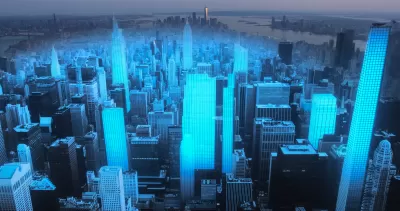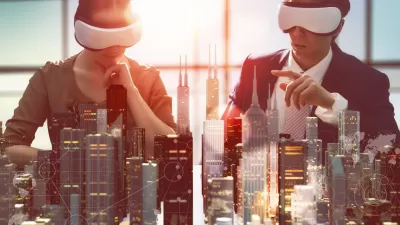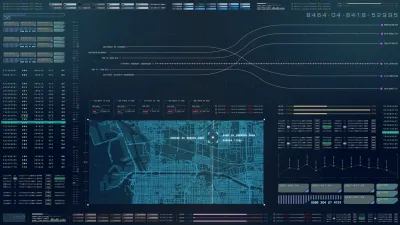With the ability to predict trends, engage citizens, enhance resource allocation, and guide decision-making, artificial intelligence has the potential to serve as planners’ very own multi-tool.

“The convergence of artificial intelligence (AI) and urban planning holds significant promise for creating more intelligent, efficient, and sustainable cities,” Camilla Ghisleni. In an article for Arch Daily, she outlines four applications of urban planning, spurred by “a surge in development of applications, softerware, and other technological systems” tailored to support city design.
1. Urban design and morphology
Ghisleni cites multiple projects and studies around the world that are using AI to analyze and create plans in a fraction of the time it would take human urban planners and with better results, including grid-based planning, rapid urban prototyping, and digital twin technology.
2. Resilience and climate adaptation
AI can also be used to enhance resilience against extreme weather events and climate change, Ghisleni reports, pointing to Google’s AI-powered tree-cover assessment tool and IBM’s AI tool that calculates the amount of carbon trees in specific areas can store, which can help when choosing species for carbon sequestration.
3. Infrastructure planning
Ghisleni highlights a software called MAIIA (Automated Mapping of Informal Settlements with Artificial Intelligence) that was created by Columbia’s National Planning Department and made available as part of a catalog of open-source tools for urban planning, with the goal of facilitating “automated detection and mapping of informal settlements in various locations, providing efficient and accessible solutions to housing challenges.”
4. Community engagement
Finally, Ghisleni covers applications including virtual reality (VR) or augmented reality (AR) to encourage a more participatory planning process, as well as real-time monitoring and analysis of user-generated data for things like traffic management and route safety alerts for women and pedestrians.
FULL STORY: Artificial Intelligence and Urban Planning: Technology as a Tool for City Design

Trump Administration Could Effectively End Housing Voucher Program
Federal officials are eyeing major cuts to the Section 8 program that helps millions of low-income households pay rent.

Planetizen Federal Action Tracker
A weekly monitor of how Trump’s orders and actions are impacting planners and planning in America.

The 120 Year Old Tiny Home Villages That Sheltered San Francisco’s Earthquake Refugees
More than a century ago, San Francisco mobilized to house thousands of residents displaced by the 1906 earthquake. Could their strategy offer a model for the present?

HSR Reaches Key Settlement in Northern California City
The state’s high-speed rail authority reached an agreement with Millbrae, a key city on the train’s proposed route to San Francisco.

Washington State Legislature Passes Parking Reform Bill
A bill that would limit parking requirements for new developments is headed to the governor’s desk.

Missouri Law Would Ban Protections for Housing Voucher Users
A state law seeks to overturn source-of-income discrimination bans passed by several Missouri cities.
Urban Design for Planners 1: Software Tools
This six-course series explores essential urban design concepts using open source software and equips planners with the tools they need to participate fully in the urban design process.
Planning for Universal Design
Learn the tools for implementing Universal Design in planning regulations.
Ada County Highway District
Clanton & Associates, Inc.
Jessamine County Fiscal Court
Institute for Housing and Urban Development Studies (IHS)
City of Grandview
Harvard GSD Executive Education
Toledo-Lucas County Plan Commissions
Salt Lake City
NYU Wagner Graduate School of Public Service




























